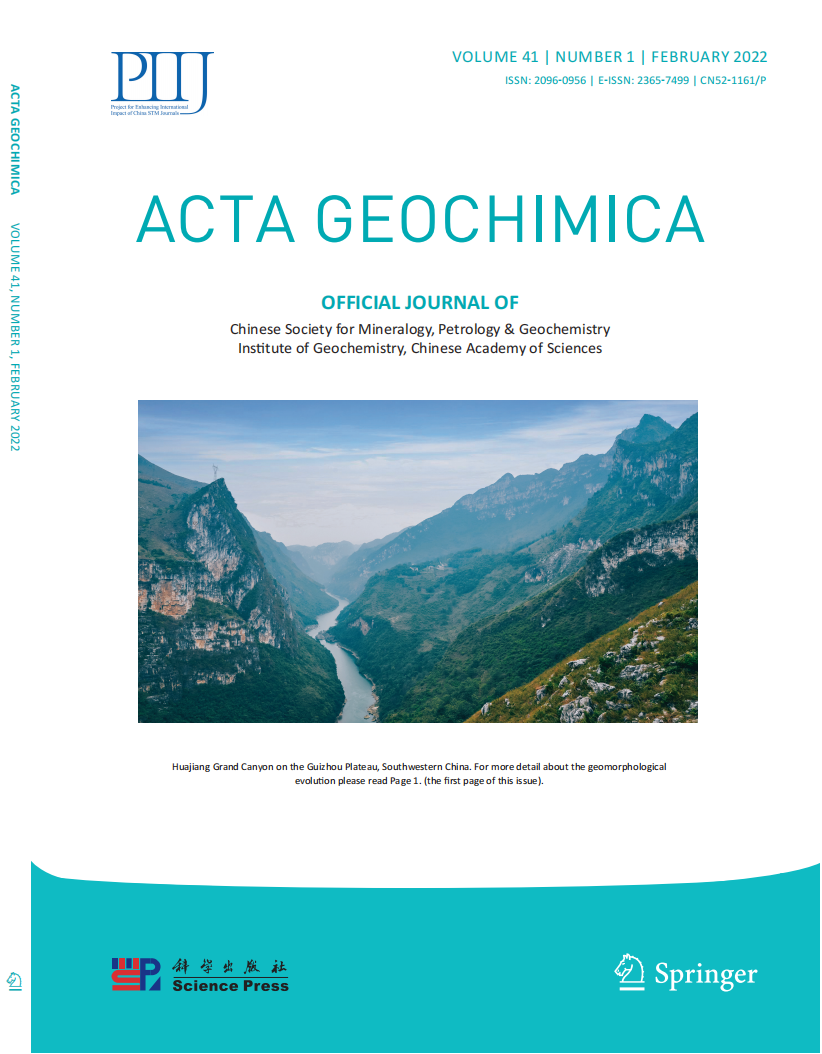- 钛学术文献服务平台 \
- 学术期刊 \
- 基础科学期刊 \
- 化学期刊 \
- 地球化学学报(英文)期刊 \
Using electrogeochemical approach to explore buried gold deposits in an alpine meadow-covered area
Using electrogeochemical approach to explore buried gold deposits in an alpine meadow-covered area
原文服务方:
地球化学学报(英文)
摘要:
Exploration for buried gold ores and other deeply buried ores, especially in high altitude localities, is one of the tough challenges facing the geological world today. Fast and efficient ore prospecting methods are badly needed to deal with the situation. This paper documents a test that, for the first time, uses an electrogeochemical approach to prospect ores in the alpine meadow-covered Bangzhuoma area and its periphery in Qinghai-Tibet Plateau. The results were compared with conventional soil measurements from a 2D prospection, and an ideal model of electrogeochemical anomaly formation in the area was established based on the comparison in order to provide theoretical guidance to buried ore prospecting in areas with similar conditions. The research shows that: (1) For exploration of deeply-buried mineral deposits, an electrogeochemical approach is better than soil measurements in terms of correspondence between element content values and anomaly forms and spatial distribution of known deposits in sections. Anomalies of high to low temperature element associations (Bi-Mo; Au-Ag-As-Bi and Au-Ag) and clear zonation were also observed along vertical vein runs in the sections. Based on integration of the observation with geological characteristics of the sections, we propose to use Au, Ag and As as the electrogeochemical indicators and Bi and Mo as the electrogeochemical tracing elements to guide further analysis. (2) Judging from element statistics and the scale, intensity, and range of anomalies in plan maps, we found that an electrogeochemical approach is less affected by topography and secondary actions. The plan maps also show that elemental differentiation coefficients of the study area are in an ascending order of Ag (0.67) < Mo (0.85) < Bi (0.97) < Au (1.51) < As (2.35), better representing the element distribution in the area and yielding more striking and concentrated anomalies for known deposits than that of the soil measurements. Apart from that, electrog

推荐文章
Application of K-means and PCA approaches to estimation of gold grade in Khooni district (central Ir
K-means method
Clustering
Principal
component analysis (PCA)
Estimation
Gold
Khooni district
Prospectivity modeling of porphyry copper deposits: recognition of efficient mono- and multi-element
Geochemical signature
Concentration–area (C–A) fractal
Principal component analysis (PCA)
Student's t-value
Fuzzy mineral prospectivity modeling(MPM)
Prediction–area (P–A) plot
Geological and geochemical characteristics of the Baogudi Carlintype gold district (Southwest Guizho
Elemental geochemistry
Fluid inclusions
Stable isotopes
Carlin-type gold deposits
Baogudi gold district
Southwestern Guizhou
内容分析
关键词云
关键词热度
相关文献总数
(/次)
(/年)
文献信息
| 篇名 | Using electrogeochemical approach to explore buried gold deposits in an alpine meadow-covered area | ||
| 来源期刊 | 地球化学学报(英文) | 学科 | |
| 关键词 | Electrogeochemistry Buried mineral deposit Ideal anomaly model Alpine-meadow covered Ihunze | ||
| 年,卷(期) | 2018,(3) | 所属期刊栏目 | |
| 研究方向 | 页码范围 | 402-413 | |
| 页数 | 11页 | 分类号 | |
| 字数 | 语种 | 英文 | |
| DOI | 10.1007/s11631-017-0258-z | ||
五维指标
版权信息
全文
- 全文.pdf
引文网络
引文网络
二级参考文献 (0)
共引文献 (0)
参考文献 (0)
节点文献
引证文献 (0)
同被引文献 (0)
二级引证文献 (0)
2022(0)
- 参考文献(0)
- 二级参考文献(0)
- 引证文献(0)
- 二级引证文献(0)
研究主题发展历程
节点文献
Electrogeochemistry
Buried mineral deposit
Ideal anomaly model
Alpine-meadow covered
Ihunze
研究起点
研究来源
研究分支
研究去脉
引文网络交叉学科
相关学者/机构
期刊影响力
地球化学学报(英文)
主办单位:
中国科学院地球化学研究所
出版周期:
双月刊
ISSN:
2096-0956
CN:
52-1161/P
开本:
大16开
出版地:
贵州省贵阳市观水路46号地球化学研究所
邮发代号:
创刊时间:
1982-01-03
语种:
英文
出版文献量(篇)
294
总下载数(次)
0
期刊文献
相关文献
推荐文献

 免费查重
免费查重










